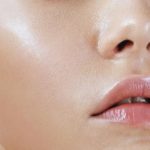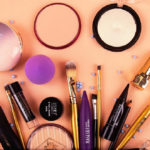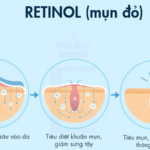Retinol has been dubbed the “gold standard” in skincare for its remarkable benefits. This article will provide you with essential information about its uses, side effects, and precautions.
1. What is Retinol? What are its benefits?
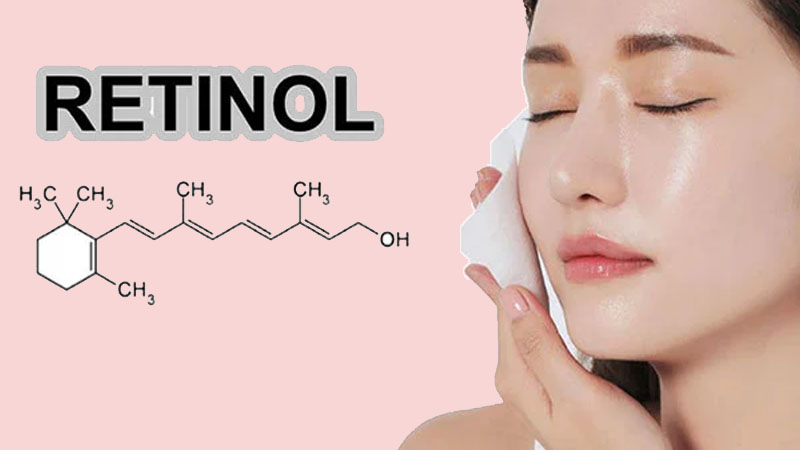 Retinol is a derivative of vitamin A
Retinol is a derivative of vitamin A
Retinol is a powerful derivative of vitamin A, a nutrient found in certain foods and available as a dietary supplement. It is commonly used in cosmetics and over-the-counter skincare products.
Retinol is a multi-purpose active ingredient used to treat various skin concerns such as: unclogging pores, improving acne, fading dark spots, and stimulating collagen production, thus combating signs of aging and promoting youthful skin.
2. Potential Side Effects of Using Retinol
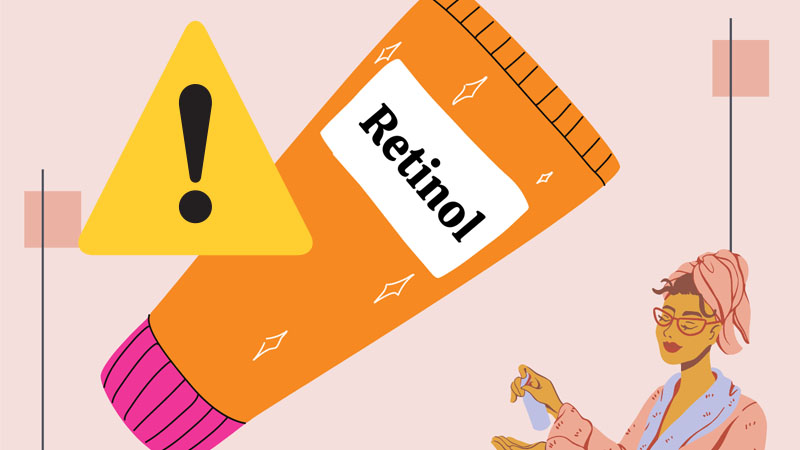 Side effects that may occur when using retinol
Side effects that may occur when using retinol
While retinol offers numerous benefits, it is important to be aware of potential side effects:
Dryness, Irritation, and Redness
The most common side effect is increased skin dryness, leading to flaking and redness. This is a normal reaction for newcomers to this potent ingredient, but it can be uncomfortable.
Purging
Retinol may also exacerbate acne, similar to other acids like AHA and BHA. It works by exfoliating the top layer of skin, bringing clogged pores and impurities to the surface, known as purging. This is a positive sign that your skin is adjusting.
Photosensitivity
Retinol can increase sun sensitivity, so it’s crucial to apply it at night and use sunscreen during the day. Cover up and limit sun exposure to prevent further skin damage.
Interactions with Other Ingredients
While it is safe to use retinol with AHA and BHA, the risk of irritation increases. Proceed with caution when combining these ingredients.
3. 12 Precautions When Using Retinol
 12 Precautions When Using Retinol
12 Precautions When Using Retinol
Always Wear Sunscreen
Sunscreen is essential to protect our skin, whether or not we are using retinol. Make it a daily habit.
Start with a Lower Frequency
To minimize dryness and sensitivity, begin by using retinol two to three times a week, gradually increasing to daily applications. This allows your skin to adjust and reduces the risk of irritation.
Begin with a Lower Concentration
Similarly, starting with a lower concentration of retinol (0.25%) and gradually increasing to higher strengths (0.5% or 1%) as your skin builds tolerance is advisable.
Use Soothing and Hydrating Products
If you experience side effects, reduce the frequency of application, and if they persist or become severe, discontinue use and opt for calming, hydrating products like serums and creams to restore your skin’s health. Avoid makeup to prevent further congestion.
Moisturize Regularly
Moisturizer is crucial in any skincare routine, especially when using retinol, as it helps counteract dryness, flaking, and redness.
Consistency is Key
Give retinol time to work its magic. It typically takes one to three months for retinol to convert into its active form, retinoic acid, and for you to see noticeable results. Patience is a virtue!
Be Mindful of Interactions with Other Actives
Retinol is often used alongside other actives in a comprehensive skincare routine. Pay close attention to ingredients that may interact with retinol, especially those from the acid family, such as AHA, BHA, and vitamin C.
With AHA and BHA: While retinol can be used with these acids, all three have exfoliating properties, so caution is advised to prevent over-exfoliation.
With Vitamin C: Vitamin C is typically applied during the day along with sunscreen, while retinol is a nighttime treatment. Exercise caution when combining these ingredients.
You Get What You Pay For
Retinol products vary in price and quality. More expensive formulas often feature advanced delivery systems and technologies, resulting in enhanced efficacy.
Avoid the Eye and Lip Areas
The skin around the eyes and lips is delicate and more prone to irritation. Refrain from applying retinol to these areas.
Wait After Cleansing
After cleansing, your skin is more vulnerable. Wait at least 15 minutes before applying retinol to ensure your skin is ready for this potent ingredient.
Pregnancy Precautions
High doses of vitamin A derivatives during pregnancy may pose risks to the fetus, including birth defects. Therefore, it is generally recommended to avoid using retinol while pregnant.
However, if you wish to continue using retinol during pregnancy, consult your healthcare provider, and consider using a lower concentration (below 0.5%) applied topically. According to the FDA, oral retinol (vitamin A) intake up to 1.5 mg/day is considered safe for pregnant women.
Retinol’s Place in Your Skincare Routine
Pay attention to the order of application in your skincare routine to maximize retinol’s benefits. A typical routine includes the following steps: makeup removal, cleansing, toning, serum application, retinol treatment, and moisturizing.
Retinol is a game-changer for many, offering solutions to various skin concerns. We hope this article has empowered you with knowledge about this potent ingredient and provided valuable insights for choosing the right retinol product for your skincare journey.
Cook the Perfect Carrot Soup for Babies That Moms Will Love – Ready in No Time!
The recently released GREEN Electric Machine pressure cooker will help mothers cook carrot soup and provide their children with the nutrients they need to keep their eyes healthy. The pressure cooker will make it easier to whip up this nutritious snack that can provide kids with vitamin A supplements for improved vision.
The GREEN Electric Machine pressure cooker has just been unveiled, providing mothers with a convenient way to prepare carrot soup for their children. This healthful snack can give kids the vitamin A supplements they need to prevent eye diseases, promote healthy eyesight, and enjoy a delicious meal.

























